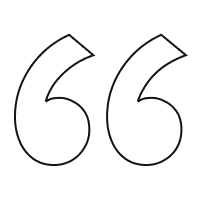Elbow pain arising from the neck
About Elbow Pain
The elbow is a hinge joint which allows the forearm and hand to be moved towards and away from the body.
The most common types of pain seen at the elbow is due to injury, with diagnoses of tennis elbow and golfers elbow often being made.
Tennis elbow and golfers elbow generally occur with repetitive motions of the wrist and arms. Tennis elbow by repetitive use of the forearm extensor muscles and golfers elbow by repetitive use of the forearm flexor muscles.
Many sports, hobbies and roles require repetitive movements and although elbow pain can occasionally be due to arthritis, generally the elbow joints are much less prone to wear-and-tear compared to most other joints.
Symptoms may range from burning to sharp pains, and/or numbness and tingling into the hand.
The nerve supply for the elbow comes from the neck (cervical spine), misalignments of the joints here as well as in the shoulders can be the primary cause of elbow pain and must therefore also be assessed prior to any type of care.
On a positive note, with the right type of Chiropractic care you can be back to normal in no time at all.
Interesting fact: only 5% of people who play tennis actually suffer from tennis elbow.
Elbow Pain Causes
01
Overuse injuries -repetitive activities like tennis and golf
02
Trauma
03
Hobbies
04
Nerve compression
05
Fractures
06
Bursitis
07
Tendonitis
08
Arthritis
Bespoke Orthotics
First Time Visitors
Relief Care
Our first goal is to relieve your symptoms as quickly as possible. The severity of your condition will determine the length of this phase. Typically, the number of visits in this phase is frequent and can involve multiple visits to the centre each week.
Rehabilitative / strengthen and corrective phase
During this phase of care, the goal is to remove the root cause of your problem and to restore optimal function. This phase of care is also dependent upon the severity of the problem. The frequency of care can still be multiple visits per week, but unlikely to be as frequent as the relief phase of care.
Wellness Care
Once your body has had the chance to heal, we believe it is important to continue with care by having periodic checkups to help prevent future problems and to enable your body to continue to function at its most optimal level. Your lifestyle, health goals, and practitioner’s advice will determine the frequency of care that is right for you.
Frequently Asked Questions
The best way to relieve elbow pain depends on the underlying cause of the pain. However, here are some general tips that may help:
1 Rest: Avoid activities that cause pain or exacerbate the condition. Rest can help to reduce inflammation and allow the body to heal.
2 Ice: Applying ice to the affected area can help to reduce inflammation and relieve pain. Apply ice (wrapped in a tea towel to avoid ice burns) for 15-20 minutes at a time, several times a day.
3 Elevation: Keeping the affected arm elevated above the level of the heart can help to reduce swelling and improve circulation.
Chiropractic : Exercises and stretches prescribed by a Chiropractor can help to strengthen the muscles around the elbow and improve range of motion. Specific adjustments to misaligned areas can help to improve function.
Elbow pain can be caused by problems in the neck, particularly if there is a irritated nerve in the cervical spine. The nerves that control the sensation and movement of the arms and hands travel from the neck through the shoulder and down to the elbow. If there is a nerve irritated in the neck, it can cause pain, numbness, tingling, or weakness in the arm and hand, including the elbow.
For example, cervical radiculopathy is a condition where a nerve in the neck is irritated, causing pain, numbness, or weakness in the arm and hand. This condition can sometimes cause pain or discomfort in the elbow.
It’s important to note that not all elbow pain is caused by problems in the neck, and a thorough evaluation by a healthcare professional is necessary to determine the underlying cause of the pain. If you have elbow pain that is accompanied by symptoms such as neck pain, headaches, or arm numbness, it’s important to see a healthcare professional to rule out any potential nerve or spinal issues.
Testimonials
What our clients say
